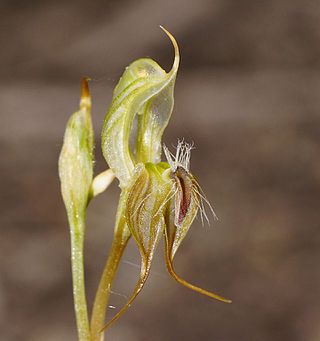Compsosomatini is a tribe of longhorn beetles of the subfamily Lamiinae.

Aerenea is a genus of longhorn beetles of the subfamily Lamiinae.
Aerenea aglaia is a species of beetle in the family Cerambycidae. It was described by Monné in 1980. It is known from Brazil.
Aerenea annulata is a species of beetle in the family Cerambycidae. It was described by Monné in 1980. It is known from Brazil.
Aerenea batesi is a species of beetle in the family Cerambycidae. It was described by Monné in 1980. It is known from Brazil.
Aerenea occulta is a species of beetle in the family Cerambycidae. It was described by Monné in 1980. It is known from Argentina.
Aerenea tuberculata is a species of beetle in the family Cerambycidae. It was described by Monné in 1980. It is known from Peru and Bolivia.
Aerenea apicalis is a species of beetle in the family Cerambycidae. It was described by Melzer in 1923. It is known from Brazil.
Aerenea sulcicollis is a species of beetle in the family Cerambycidae. It was described by Melzer in 1932.
Aerenea flavofasciculata is a species of beetle in the family Cerambycidae. It was described by Stephan von Breuning in 1948. It is known from Peru.
Aerenea punctatostriata is a species of beetle in the family Cerambycidae. It was described by Stephan von Breuning in 1948. It is known from Brazil.
Aerenea ecuadoriensis is a species of beetle in the family Cerambycidae. It was described by Stephan von Breuning in 1947. It is known from Ecuador.
Aerenea brunnea is a species of beetle in the family Cerambycidae. It was described by Thomson in 1868. It is known from Argentina, Colombia, Brazil, Suriname, French Guiana, Panama, Peru, Bolívia, Paraguay, Venezuela, and Trinidad and Tobago.

Aerenea impetiginosa is a species of beetle in the family Cerambycidae. It was described by Thomson in 1868. It is known from Guatemala, Honduras, Colombia, Costa Rica, Mexico, Nicaragua, Panama, Peru, and Venezuela.
Aerenea periscelifera is a species of beetle in the family Cerambycidae. It was described by Thomson in 1868. It is known from Colombia and Brazil.
Aerenea bimaculata is a species of beetle in the family Cerambycidae. It was described by Juan Brèthes in 1920. It is known from Peru and Bolivia.
Aerenea panamensis is a species of beetle in the family Cerambycidae. It was described by Martins and Galileo in 2010. It is known from Panama.

Aerenea quadriplagiata is a species of beetle in the family Cerambycidae. It was described by Carl Henrik Boheman in 1859. It is known from Argentina, Brazil, Bolivia, Paraguay, and Uruguay.
Petriella setifera is a fungus commonly found in soil and feces. The fungus has also been located on wood rot, plant species, and compost. A significant portion of P. setifera reports are found on sources with no previous association with the fungus. There are no known human cases of fungal infection, but one reported case of a dolphin infection. The fungus may have immunosuppressive characteristics, but it has not been confirmed. Many properties of the fungus are unknown, requiring further research.

Pterostylis setifera, commonly known as the bristly rustyhood or sikh's whiskers, is a plant in the orchid family Orchidaceae and is endemic to south-eastern Australia. It has a rosette of leaves and four to ten translucent white, green and brown flowers which have an insect-like labellum with long, bristly hairs.


